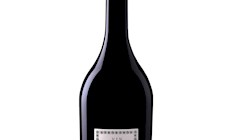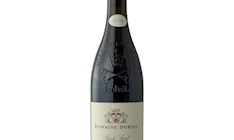Best European Alcoholic Beverage Types
Brunello di Montalcino is a red Italian wine produced in the vineyards surrounding the town of Montalcino in the Tuscany wine region. Though it was initially considered to be made from a separate grape variety named Brunello, it was later discovered that the grape used in the production of the wine is in fact Sangiovese.
Regarded as one of the most renowned Italian wines, Brunello di Montalcino was awarded the designation of origin (DOCG), and it is produced with 100% Sangiovese grapes. At first, it comes off as juicy and spicy, with notes of oregano and balsamic, and it may develop strong aromas of cherry and leather.
Baga is a red grape variety mostly used in the Portuguese Bairrada appellation. This dark-skinned grape can produce wines of various characters, but until the 1980s, most producers used it for inexpensive bulk wines. When the approach and the techniques were adjusted, it was shown that Baga is able to produce excellent quality wines with great aromatic structure, good acidity, and firm tannins.
Baga wines are built for long aging and significantly benefit from the time spent in the bottle. The powerful tannins will tone down, and the aromas usually gain some elegance and complexity. Young Baga wines will have aromas of red berries and fruit, which may evolve into more complex expressions of tobacco, plums, and coffee.
This full-bodied, red wine is made from Nebbiolo grapes in a small area in Piedmont with a unique soil and climate conditions. It has been produced since the 19th century, and soon after its invention, it became a favorite among the Italian and European nobility.
According to Italian DOCG regulations, Barolo needs to matured for at least 36 months, while those aged for five years carry the prestigious Riserva label. It is a robust, but elegant wine, which is very high in tannins that soften with aging.
THE BEST Barolo Wine Appellations
Vintage Port is a style made from the best grapes of a single year harvest. It is considered the most prestigious and the highest quality port style. Vintage is not produced every year, but only when port houses decide that the wine is of sufficient quality.
Vintages make only about 2% of all port production, and in the best years, all port houses will declare a Vintage. The decision to declare a Vintage can be made after Portugal’s Port Wine Institute had approved it. Vintages are barrel-aged for two to three years and are not filtered before they are bottled.
Rías Baixas is a Spanish appellation located along the Atlantic coast in Galicia. The entire region is divided into five subregions: Salnes Valley, O Rosal, Soutomaior, Ribeira do Ulla, and Condado do Tea. There are several permitted grape varieties, but Albariño prospers and dominates in the entire region.
Other permitted grapes that are sometimes used include Treixadura, Loureiro, Caiño Blanco, Torrontes, and Godello. The styles slightly differ depending on the subregion and the production, but most of the wines hail from the region are pale golden, fresh, and aromatic.
Châteauneuf-du-Pape is the largest and the most important appellation in the southern part of the Rhône Valley that comprises of five communes. Most Châteauneuf-du-Pape wines are predominantly red blends, with a small percentage of whites.
Officially eighteen grape varieties are allowed, including different colors of the same grape variety. However, the most common are Grenache, Mourvèdre, Syrah, and Cinsault grapes. These rich wines can greatly differ in style, but they are mainly characterized by the spicy and earthy aromas of red berries, black pepper, tar, and leather.
THE BEST Châteauneuf-du-Pape Wine Appellations

Domaine de la Solitude
2021 Châteauneuf-du-Pape Vin de la Solitude Red
James Suckling - 99 points 2024

Vinsanto is a dessert wine hailing from Santorini. It is made with sun-dried Assyrtiko and Aidani grapes. Despite a surprisingly similar name, this Greek wine does not have much in common with the more famous Vin Santo from Tuscany. The grapes are sun-dried for approximately fourteen days and are then fermented and aged.
This wine has to be oak-aged for a minimum of two years, but most producers opt for longer maturation. The result is a sweet and dense wine packed with flavor and rich in aromas. Although both grape varieties are white-skinned, Vinsanto will attain a luscious golden color that tends to turn into darker amber hues as the wine ages.
This French wine region is located in the Loire Valley (Touraine district), and it is known for the production of varietal white wines that are predominantly produced from Chenin Blanc. Although the appellation also includes sparkling and dessert wines, Vouvray is mostly known for their crisp dry wines (sec).
These wines are characterized by their straw yellow color, vibrant acidity, and complex aromas that typically include floral, citrus, and white fruit notes. Dry Vouvray wines have excellent aging potential. With age, they evolve, but remain fresh, aromatic, and lively, while their aromas may develop into ripe white fruit, almonds, and hazelnuts.
Naousa is a Greek appellation located in the region of Macedonia. The wines produced under the designation are made exclusively from Xynomavro—an indigenous Greek grape that is often compared to Pinot Noir and Nebbiolo. Naousa wines display the perfect balance of tannins, sugar, and acidity, while the typical aromas and flavors include a complex combination of savory notes that are often reminiscent of dark and red fruit, tomatoes, plums, earth, tobacco, herbs, and spices.
Naousa ages exceptionally well and is rarely enjoyed young. Because of its complexity and finesse, it is often cited as one of the finest Greek wines. An ideal pairing for this tannic wine is game, lamb, tomato-based sauces, rich stews, sausages, mushrooms, and aged cheese.
Georgian amphora wine is produced with an ancient wine-making method in which pressed grapes, including skins, juice (tkbili), stalks, and pips, are poured in traditional terracotta amphorae known as qvevri (kvevri). The amphorae are sealed and are then buried underground, or kept in Marani—underground cellars.
Usually, the wine is left to ferment from five to six months. The method is used throughout the country, though the wines can slightly vary in styles depending on the region. In Kakheti, the wine is produced with whole chacha—pomace—while in Imereti approximately only a third is used.
TasteAtlas food rankings are based on the ratings of the TasteAtlas audience, with a series of mechanisms that recognize real users and that ignore bot, nationalist or local patriotic ratings, and give additional value to the ratings of users that the system recognizes as knowledgeable. For the “Top 100 European Alcoholic Beverages” list until April 02, 2025, 26,787 ratings were recorded, of which 21,011 were recognized by the system as legitimate. TasteAtlas Rankings should not be seen as the final global conclusion about food. Their purpose is to promote excellent local foods, instill pride in traditional dishes, and arouse curiosity about dishes you haven’t tried.


























































































































